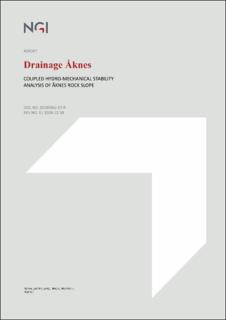| dc.contributor.author | Shabanimashcool, Mahdi | |
| dc.coverage.spatial | Norway, Stranda, Åknes | en_US |
| dc.date.accessioned | 2023-11-29T20:44:48Z | |
| dc.date.available | 2023-11-29T20:44:48Z | |
| dc.date.issued | 2020-12-18 | |
| dc.identifier.uri | https://hdl.handle.net/11250/3105292 | |
| dc.description.abstract | Stability of Åknes rock slide was assessed by coupled hydro-mechanical numerical analysis. The analysis was carried out by considering explicitly the rock joints network and the sliding planes.
Numerical analysis shows that with draining all the groundwater from the sliding surface the factor safety will improve ca. 0.5 and 4 % in the east and west flank of the slope, respectively.
Fast infilling of the backscarp due to flooding can destabilise the west flank: decreasing the factor of safety to 0.89.
It was shown that in hypothetically highest groundwater level inside the rock mass, the west flank has higher tendency of becoming unstable than the east flank. | en_US |
| dc.description.sponsorship | Norges vassdrags- og energidirektorat (NVE) | en_US |
| dc.language.iso | eng | en_US |
| dc.publisher | NGI – Norges Geotekniske institutt | en_US |
| dc.relation.ispartofseries | NGI-Rapport;20180662-07-R | |
| dc.subject | Åknes | en_US |
| dc.subject | Rock slope | en_US |
| dc.subject | Numerical Modeling | en_US |
| dc.subject | Stability analysis | en_US |
| dc.subject | Drainage | en_US |
| dc.title | Coupled hydro-mechanical stability analysis of Åknes rock slope | en_US |
| dc.type | Report | en_US |
| dc.source.pagenumber | 46 p | en_US |
